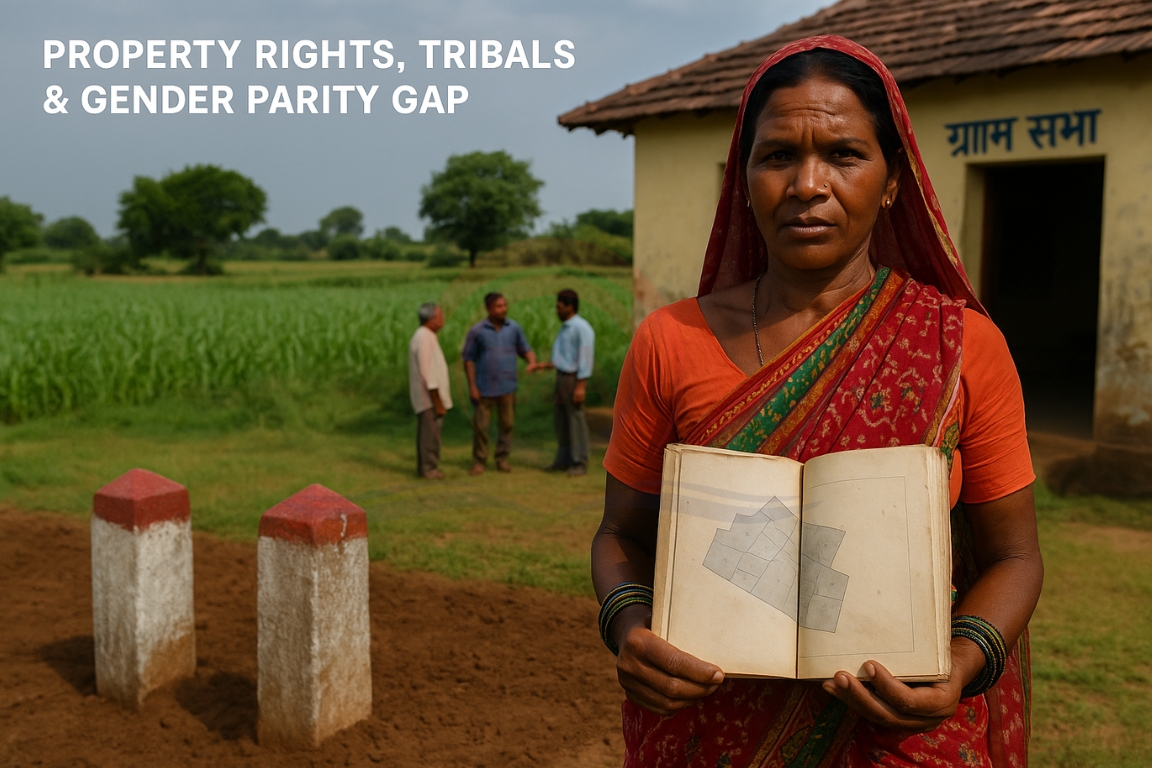The Supreme Court in Ram Charan & Ors. vs Sukhram & Ors. (July 17, 2025) ruled that excluding daughters from ancestral property violates their fundamental right to equality.
Background
- Tribal communities in India are largely governed by customary laws in matters of marriage, inheritance, and adoption.
- Unlike Hindu or Christian women, most tribal women (except in matrilineal tribes of the northeast) lack statutory rights to inherit ancestral land.
- The issue links directly to gender inequality, economic empowerment, and land rights in Scheduled Tribe (ST) communities.

Key Case: Ram Charan vs Sukhram (2025)
- Concerned a Gond tribal family in Chhattisgarh where a daughter’s heirs sought partition of ancestral land.
- Trial Court & First Appellate Court: Rejected claim, citing tribal custom excluding women.
- Chhattisgarh High Court: Upheld daughters’ right, saying denial worsens discrimination.
- Supreme Court: Affirmed that excluding daughters is unconstitutional and against gender equality.
Earlier Judicial Positions
- Madhu Kishwar vs State of Bihar (1996): Court upheld customary laws, saying striking them down could cause chaos, thus denying equal inheritance to women.
- Prabha Minz vs Martha Ekka (2022): Jharkhand High Court recognized Oraon women’s property rights as defendants failed to prove existence of a binding custom.
- Kamala Neti vs Land Acquisition Officer (2022): Supreme Court supported women’s rights in tribal property compensation cases, showing a progressive shift.
Challenges
- Customary Laws: In Scheduled Five Area States (Chhattisgarh, Jharkhand, Odisha), customs deny women inheritance rights.
- Low Ownership: Only 16.7% of ST women own land compared to 83.3% of ST men (Agriculture Census 2015-16).
- Communitarian Property Argument: Often used to deny women rights, but in practice, land sale money rarely benefits the community.
- Fear of Land Alienation: Anxiety that women marrying outside the tribe will lead to loss of tribal land.
- Customs vs Law: Customs must pass tests of continuity, reasonableness, and alignment with public policy—many fail these criteria.
Way Forward
- Separate Tribal Succession Act: Since Hindu Succession Act excludes STs, a codified law tailored for tribal communities is necessary.
- Codification of Tribal Laws: Standardized legal framework can balance gender justice with tribal traditions.
- Strengthening Judicial Oversight: Courts must continue testing discriminatory customs against constitutional guarantees of equality.
- Awareness and Advocacy: Empowering tribal women legally and socially is crucial for narrowing the gender gap.
Conclusion:
The recent Supreme Court judgment is a landmark for gender justice among tribal communities. However, without legal codification and policy reforms, tribal women will continue to face exclusion from property rights.





